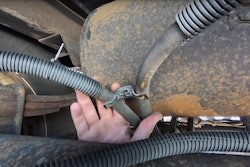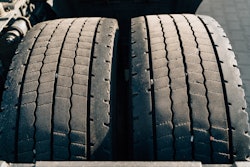When you're managing a mixed fleet consisting of vehicles, equipment and assets, upkeep is everything.
Checking fuel mileage, ensuring proper tire pressure, running maintenance and performing daily inspections are all integral parts of taking care of your equipment. After all, maintaining equipment to keep it work-safe is essential to your company's ability to sustain and gain a competitive advantage.
Any type of equipment downtime cost can add up considerably over time. As such, it's critical to have a maintenance solution in place that surveys which equipment needs maintenance checks and potential repairs. A preventive maintenance solution can also give you a greater level of control over how your fleet performs, both in the short and long term.
Why is preventive maintenance necessary?
As a fleet manager, implementing a preventive maintenance solution can be one of the most effective ways to improve productivity, efficiency and safety. This is because maintaining a complete record of each piece of equipment you manage can help you keep track of asset history, repairs, and any other relevant data that would affect use. Implementing a preventive maintenance system can also help you ensure your equipment warranty remains intact by following and tracking required maintenance plans.
As your fleet grows, maintenance must also grow. As such, your business must have a system in place that can prompt you to take necessary actions for all of your assets. From here, you can find numerous ways to improve safety and practice equipment preventive maintenance in a way that empowers your entire team to work smarter, safely, and successfully.
How can you establish a preventive maintenance workflow?
If your fleet maintenance setup is lacking, your team members will not be able to use equipment effectively to solve real problems. Fortunately, there are four ways to combat the issue:
1. Set up a maintenance record.
An ongoing, real-time maintenance record will help you predict upcoming needs without inconveniencing your drivers' schedules or compromising safety. As your fleet expands, an automated inspection reporting component is essential because as fleet size increases, so does the complexity. You need a system that can prompt you to check or allocate resources to any potential issues.
2. Balance ongoing inspection with impromptu needs.
Many vehicles will have additional needs, so your system needs to have room for mapping those extras. For example, a particular piece of equipment may include a generator that needs an extra maintenance check every 100 hours. Your workflow must account for that and be prepared to provide the necessary preventive maintenance.
3. Focus on onboarding.
An effective onboarding process is the difference between an okay tool and a great tool. Without onboarding, important program features can go unused, and mistakes and misunderstandings can ensue. As such, it's crucial to find a preventive maintenance platform that enables your team to learn and understand all of the necessary aspects to improve site safety and keep equipment running in prime condition while generating a profit.
4. Fuel the system with human care.
Most industry planners go wrong when assuming that a system can handle everything. Customer support is critical even with maintenance. Without your provider's support, you just won't access the full value of the platform you're using. You need a system that is highly connected to people on both sides of that platform so it understands and allows for real, complex needs of fleet life.
Fleet management teams that dedicate themselves to developing an efficient, thorough, and easy-to-use system will be the teams that can move beyond that system and deliver even when times are turbulent (which they certainly are right now).
Automation in the construction industry has come a long way, and it's now possible to practice construction equipment preventive maintenance rather than wait until something goes wrong and scramble to fix it. You just have to know where to begin.
Matt Brett is the chief customer officer at ASCEND, the agile, adaptable, all-in-one, easy-to-use fleet management system that simplifies fleet utilization and tracking to enable you to work smarter, operate safer, grow faster, and move nimbly through challenging times.











